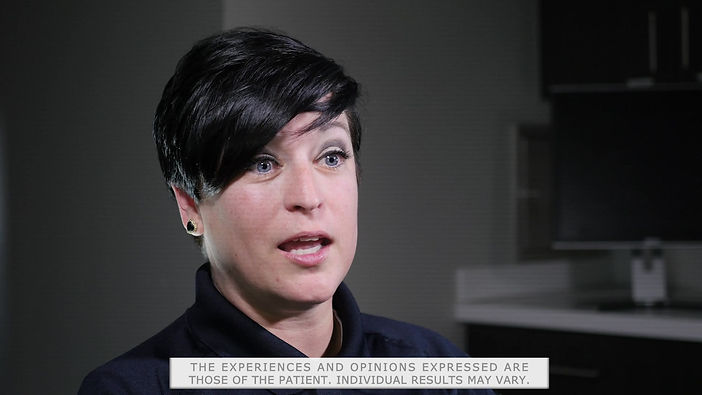Chronic Peripheral Nerve Pain:
The Problem & Solution
The Problem
Pain of the peripheral nerves, also known as peripheral neuropathy, occurs when the nerves outside the brain and spinal cord are experiencing issues. These nerves relay information between your brain and the rest of your body. This means pain in one part of the body (say, your shoulder) could be caused by a problem with your peripheral nerves.
Peripheral nerve injury is caused by:
-
Entrapment, brought on by trauma injuries
-
Compression
-
Disease
-
Inflammation
Symptoms of peripheral nerve injury include:
-
Numbness
-
Tingling
-
Burning
-
Weakness
-
Chronic pain in a contained region of the body.
Although the symptoms of peripheral nerve injury can be felt in any area of the body, it is commonly connected to pain in the shoulder, knee and back.
Peripheral nerve stimulation is a common treatment for peripheral nerve injury. The most common types of peripheral nerve injury treated by peripheral nerve stimulation are:
Cluneal Neuralgia (back pain)
Back pain is often the result of cluneal neuralgia, also known as cluneal entrapment neuropathy, resulting from damage of the cluneal nerves within the lower back. This pain sometimes radiates from the lower back to the leg. It is often on one side of the body and diagnosed by pushing on the area experiencing pain.
Suprascapular Pain (shoulder pain)
Suprascapular neuropathy is an uncommon, but increasingly recognized, source of shoulder pain caused by entrapment or compression of the suprascapular nerve.
Patients who have had shoulder replacement surgery or a suffered a torn rotator cuff or other injuries can be susceptible to this type of nerve damage.
Tibial Pain (foot and ankle pain)
The tibia is more commonly known as the shin. Among the most common tibial pian is shin splints, generally caused by strenuous athletic activity.
Genicular Nerve Pain
The genicular nerves are located around the knee joint. Pain can be caused by diseases like osteoarthritis, failed surgeries (knee replacements) or by injuries.
Intercostal Neuralgia
Intercostal nerves run along the ribs, chest and abdomen. Pain associated with intercostal may be intermittent or constant.
Post-hernia surgery/Ilioinguinal
Ilioinguinal neuralgia is a common cause of pain in the lower abdomen and the upper thigh. It is common after injury or surgeries, including hernia operations.
The Solution

The Nalu Neurostimulation System may offer a long-term solution for patients with chronic pain caused by neuropathy. This drug-free, pain-management approach uses mild electrical impulses to block pain signals from various parts of the body before they get to the brain.
Peripheral Nerve Stimulation (PNS) trial
Studies show that over 80% of patients experience a 50% or greater improvement in their pain through PNS. However, to ensure that PNS is the right solution for a patient, they first undergo a test run with the system. This is called a peripheral nerve stimulation (PNS) trial.
For the trial, patients undergo a minimally invasive procedure where thin wires, called leads, are placed under the skin near the nerves associated with the pain. This procedure does not require an incision.
A PNS trial is considered a success if the patient responds with 50% or greater improvement in their pain and function in the affected areas. The trial lasts between five and seven days. At the end of the trial, the electrodes are removed.
Note that during the trial, to avoid getting the device wet, showering should be done with care and the device should not be submerged in water. Sponge bathing is preferred.
Permanent Peripheral Nerve Stimulation (PNS) system
After the trial, the physician and patient discuss whether permanent peripheral nerve stimulation system is the appropriate next step in treatment.
If so, a permanent device will be implanted inside the patient through a 1.2-centimeter incision. A small, dime-sized device, called a micro-implantable pulse generator (IPG), is also placed under the skin and connected to the leads to provide the electrical impulses.
The entire procedure takes less than an hour, and typically requires local anesthetic with light sedation.
For more details on the process of determining whether the Nalu Neurostimulation System is right for you, visit our step-by-step guide.
Don’t yet have a doctor, but suffer from these pain conditions? Let us connect you with a physician in your area.
Testimonials

